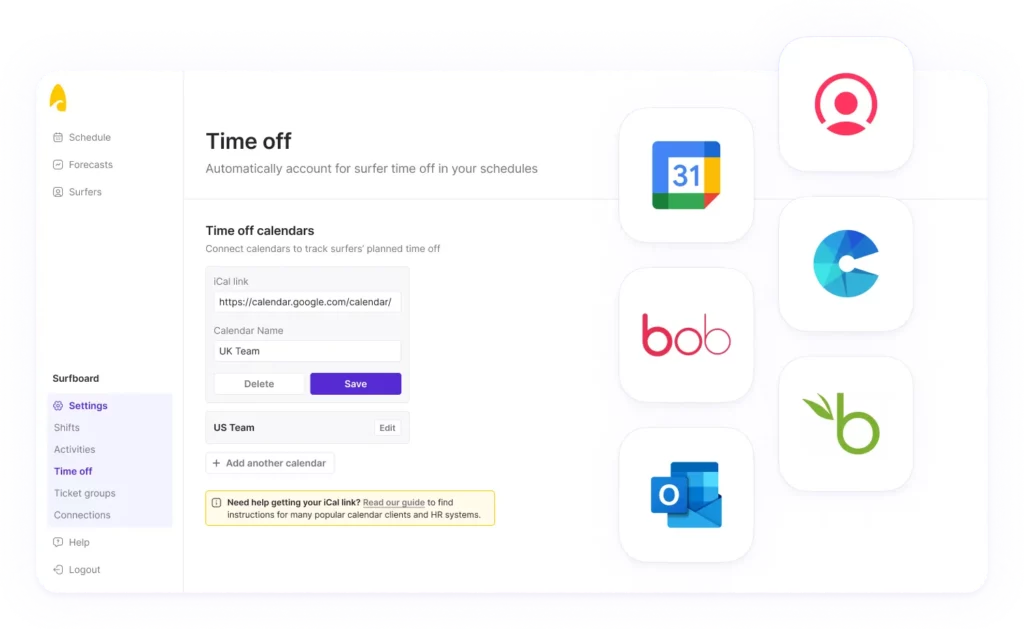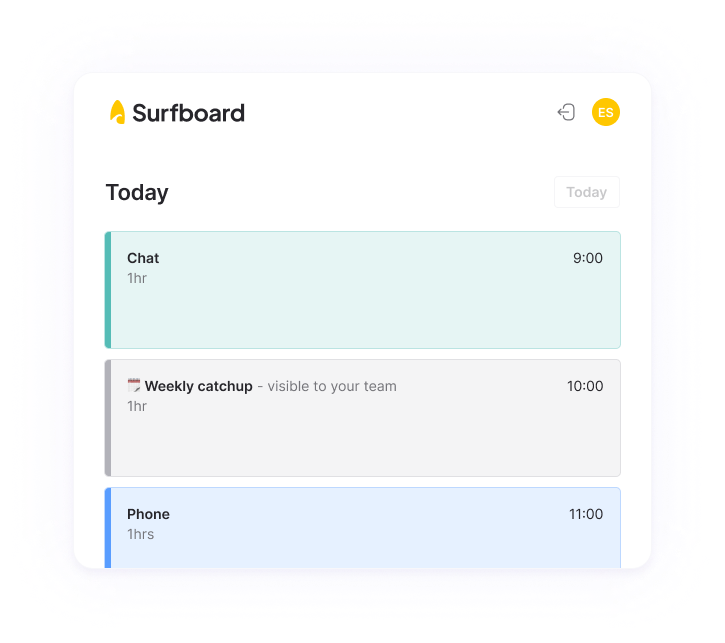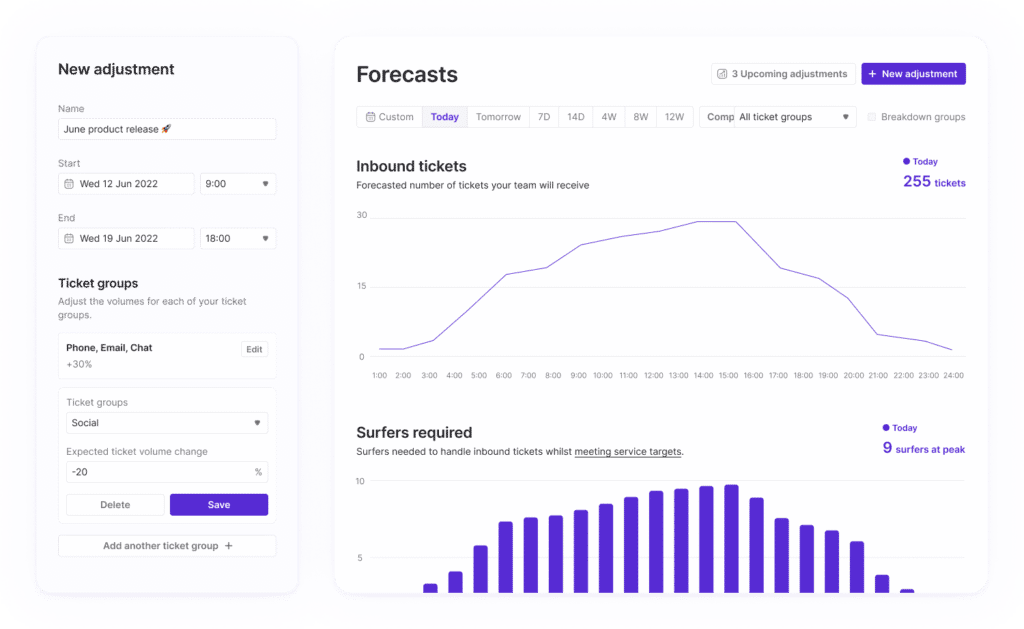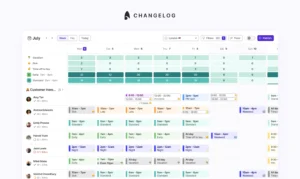
Call centre scheduling: How to get it right

Call centre scheduling isn’t easy. At least, that’s what people are lead to believe. One of the main reasons that call centres can be difficult to manage is that the scheduling of agents (surfers) often breaks down. It’s a complicated process but it’s vital to get right, as it’s the foundation of the purpose of a call centre: providing excellent customer service.
The first key element of call centre scheduling is planning. It’s about analysing the call volume on each day of the week, and what that looks like on an hourly and even minute-by-minute basis. In other words, how much calls/emails/live chat will a centre receive in any given day? Are there are any tends or patterns that emerge as a result? How do we forecast call volume?
The other side of this is, of course, the surfers. The surfers’ work schedules will need to match the call volumes in order to meet service level agreements or SLAs (more on this later) and provide great customer service. Call centre scheduling is the analysis of call volumes and the implementation of a work schedule that matches those volumes.
How to get call centre scheduling right:
Now that the concept of call centre scheduling has been clarified, the next step is learning how to get it right. We’ve detailed the steps below as a list of sure fire ways to improve call centre scheduling.
Before we go through those, let’s first address the concept of workforce management software (sometimes referred to as WFM). According to tech target, Workforce management (WFM) is a set of processes that a company uses to optimise the productivity of its employees while effectively forecasting labor requirements and creating and managing staff schedules. Unfortunately, in our experience, WFM software has often been used to track, monitor, and even reprimand surfers.
That’s not what we do. We make software that empowers teams to do their best work with a collaborative team planning tool that brings the team together. Now that we’ve got that off of our chest, let’s see how to get call centre scheduling right.
Evaluate your teams tasks in granular detail:
We mentioned planning earlier as one of the key elements of call centre scheduling. this involves breaking down all of the tasks that a support organisation have to work on each day, hour by hour, or even minute by minute. It’s not just calls of course. It can be emails, live chat, meetings, or importantly, the offline duties that surfers working in call centres often have to work on in order to truly solve customer problems. After all, 60% of all agent work occurs off the phone. With features like iCalendar integration and blocked events, team planning tools like Surfboard allows teams to automatically add holidays, time off, team meetings, one to ones, and off the phone work to the teams schedule. See some screenshots of how this works below:


Ensure accurate forecasting of call volumes:
Following on from shift planning is forecasting. Getting planning and forecasting right is crucial, as that’s how to figure out the volume of customer demand and in turn, how to match that volume with staffing levels. Once the planning phase mentioned above has been completed, you’ll need to figure out a way of implementing this data in to a forecasting model. There’s many ways to do this, with some being more manual than others. Tools like Surfboard can forecast call centre demand and the accompanying staffing levels needed at the touch of a button.

Measure the correct call centre metrics:
Measuring metrics are a cornerstone of managing any call centre. To ensure accurate forecasting and scheduling, metrics like surfer turnover, answer rate, call duration, average handling time (AHT) should be collected and analysed often. After all, SLAs are the overarching goal of a lot of call centres, so ensuring you monitor the metrics that dictate SLAs is paramount.
But measuring metrics in a call centre is about so much more than these efficiency focused metrics. The bottom line is about customer experience. If surfers are under pressure and not happy or fulfilled in their role, turnover will remain high, and customer experiences will be effected. An important metric to track is CSAT (customer satisfaction score). It tracks how satisfied a customer is on a scale of 1-5 from very unsatisfied to very satisfied.
The goal is to track a holistic mixture of quantitative performance metrics and qualitative metrics that provide visibility over whether or not a surfer is providing great service. Of course, in order to achieve high CSAT levels, surfers should feel happy in their roles. So, how can call centre scheduling help with this?
Empower your customer support agents (surfers):
A basic tenet of customer service is that happy employees mean happy teams. When surfers feel autonomous, fulfilled and purposeful in their role, they will pass on this happiness to the customer. It also works the other way when surfers are disengaged and unhappy, and CSAT levels will reflect that.
We previously conducted research with breakroom on the state of shift working in the UK, and found that:
- 50% of shift workers have no input into their shifts and are unable to schedule them around their needs.
- 56% of shift workers think their shifts are poorly planned and don’t take their needs into account.
- 30% of shift workers get one week or less notice of their shifts.
These statistics are striking in that shift workers don’t seem to be taken in to account when it comes to scheduling and shift planning. It’s no surprise then, that over 70% of shift workers report that working shifts have affected their physical or mental health. This further drives home the importance of collaborating with surfers when setting schedules. That is to say they should have a voice and their lifestyle and individual needs should be taken in to account when planning shifts.
Call centre scheduling with Surfboard:
With Surfboard, we do forecasting, scheduling, and shift planning. So what? Other companies do this too. The difference is that we enable call centre support teams to collaborate and communicate on all of this in one place. We empower teams to work together on shift planning, so that the entire team is happy with their schedule and can focus on what’s important – delivering great customer experiences.



